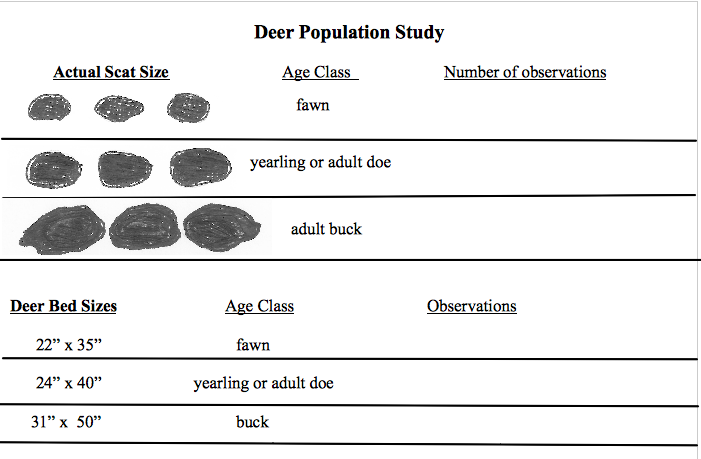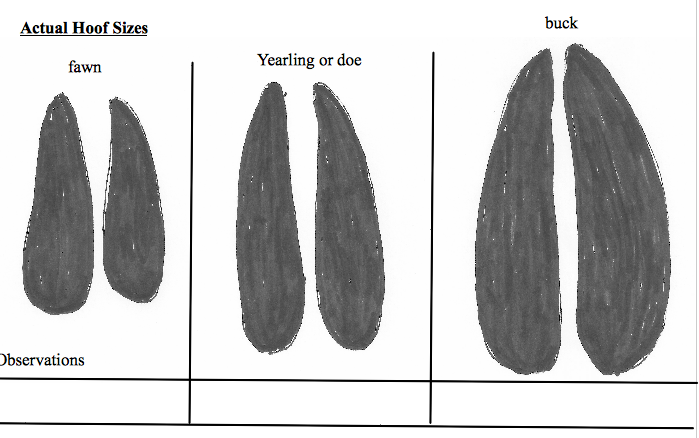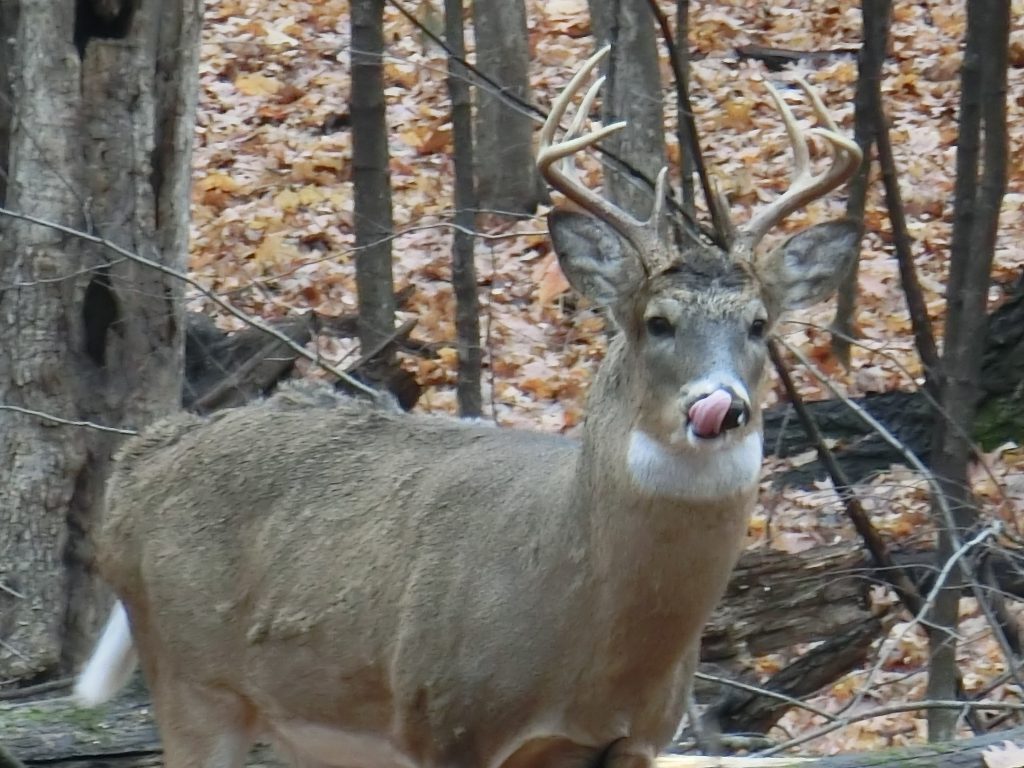
photograph by Dale Antonson
If you live in a suburban area, white tail deer can be pests eating the hostas and the vegetables in your garden; destroying a young tree by making it a rubbing post during the rutting (mating) season.
But white tails are the largest wild mammal in our neighborhoods, and are incredibly beautiful and sleek. There is something special about taking a morning hike and watching doe and yearling bound away with their tails “flagging” in the air.
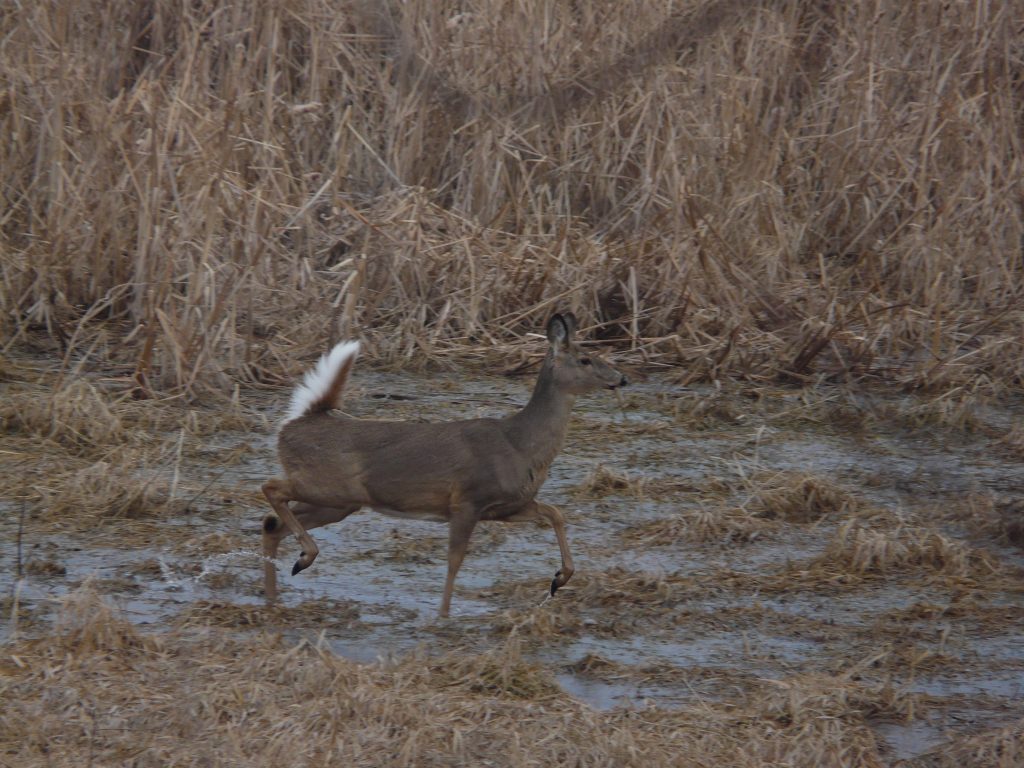
White-tail “flagging”
Photograph by Larry Wade
Below are some stories about white-tail encounters:
- On an October morning, I walked out to get my mail, it was during the rutting season, and a buck was trying to mount a doe in the street, not 50 feet from me (Hormones can be overwhelming for all mammals sometimes). Larry Wade
- My wife and I were hiking and our dog, Hug, was barking wildly ahead of us. She had recently weaned her pups. We rushed up to see a wobbly newborn fawn nursing from Hug’s teats. The dog was standing with a bewildered look on her face, not sure if she should try to take bite out of the fawn or lick it. Time slowed down to one frame per second. My wife, picked the fawn up and cradled it. Then we both realized what she has done and she laid the fawn down in the weeds. We continued down the trail, wondering if the whole event had even happened.
Larry Wade
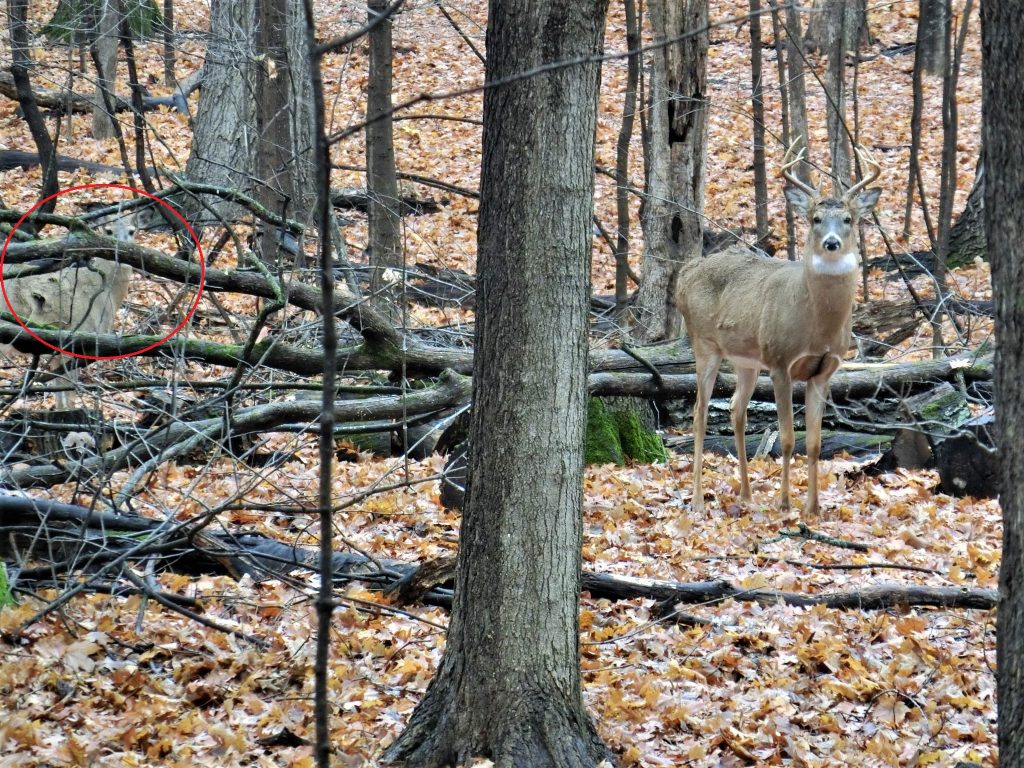
Photograph by Dale Antonson
- I had the good fortune to have a free hour to spend before our worship service last Sunday, so I ventured over to Lake Ann in Chanhassen for a hike in the beautiful forest there. I was alone, so I prefer to move through the woods carefully and quietly. I was pleased to come upon a pair of deer. I paused and took some of the photos for this posting. Look carefully in the photo above and you can see the doe who blends so well into the background. As I began to walk away from them, the buck began to follow after me, which made me a little nervous. Thankfully, I was able to move up a hillside and lose his sight line.
story by Dale Antonson - Many years ago, I was working with a group of 6 graders at a nature center. We were doing a deer study near a deer feeding station. I was showing the students how you could tell the age of the deer by looking at the scat (poop). I was getting less than 10 % interest from the group. So, having a few milk duds in my pocket, I reached down pretending to pick up some deer scat. I said to the group, “You don’t need to be so freaked out, because deer scat tastes pretty good”. Then I popped the milk dud into my mouth. I’ll never forget the look on those kid’s faces. Their jaws dropped and eyes bugged out, as they tried to fathom what had just happened.
Larry Wade
If you have a favorite white tail story post in the comments section.
Deer Population Study
Do you have a deer herd in your neighborhood? What is the population make-up the herd? By recording some simple field observations, you can get a good idea what age groups of deer live there. Below are three tools for studying deer populations including: scat analysis; measuring the size of deer beds; and analyzing hoof size.
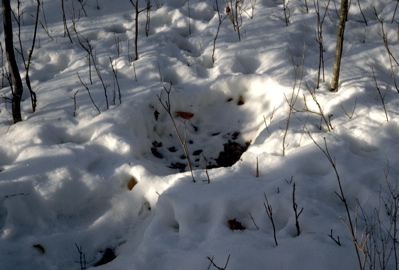
Deer bed
What to do: Go out into woods looking for deer signs: including scat, tracks, and beds. You will need a tape measure to determine the deer bed size. When it comes to analyzing scat, count individual clumps. Make a tally for each of the signs that you find. The number of tallies that you make for each age class, will give a good idea what the population structure is in your neighborhood.
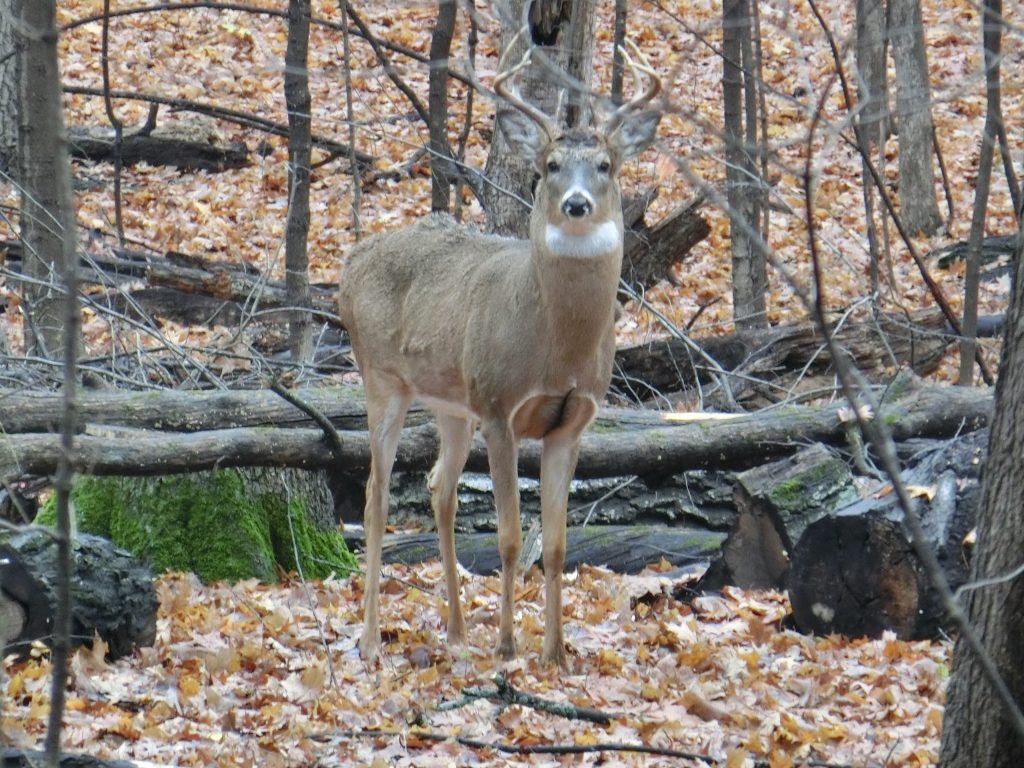
Photograph by Dale Antonson

